Date of interview: 2013/04/29 (Mon.)
We traveled from Masudani Dam to Eiheiji Dam. It was a random route, so if I had planned the itinerary in advance, it probably would not have happened.
Eiheiji Dam is located behind Eiheiji Temple, the head temple of the Soto sect of Zen Buddhism, and is truly a dam that seems to protect Eiheiji Temple. During its construction, it was also called the Eiheiji River Dam.
Incidentally, Google Maps does not show a road to the Eiheiji Dam, so it is difficult to find the way to the dam, but there is a road on the south side of the Eiheiji Temple grounds, and if you follow it, you will arrive directly under the embankment.
There is a "No Entry" sign, but if your purpose is to visit the dam, it seems that you can go straight through. However, when I went there, it was evening, so there were few pedestrians, but if it is a holiday daytime, there will be many worshippers, so it is better to avoid going through.
In that case, there is a road (with a tunnel) leading to the top of the mountain further to the south, so it would be better to use that road. For some reason, Google Maps does not show this road, but the GSI map does, so I will include it for your reference.
Eiheiji Dam Management Station
The arrival time was after 5:00 p.m., and as expected, we could not get a dam card after hours. The management office is located on the left bank.
View of the monument
A dam-like shaped stone monument with the name "Great Buddha Lake" sits in front of the management office. It is an expensive-looking stone monument that looks like black granite.
View of the top edge from the left bank
The top edge looks wide enough for cars to pass through, but there is a roadblock in front of it, so it is impassable.
View of the levee downstream from the left bank
Thank you for your patience. Finally, the dike is here. It is a common type of embankment of the municipal type. There are two free overflow emergency flood discharges at the crest and one orifice-gate permanent flood discharge at the center. There is also a water intake and discharge system with five Φ400mm slide gates and one Φ520mm slide gate for lowering the water level as a multi-stage gate.
View downstream from the top
There is a wide terrace-like area in the center of the top edge that offers a view, but because of the orifice gate in the center, it looks like this when captured in a photograph.
Operation room for water intake and discharge facilities
The left side seems to be the operation room for the intake and discharge system, as there is a gate nameplate on the left side, but the right side is a bit confusing. I think it might be an elevator, but I am not sure.
View of the cornerstone from the right bank
右岸まで来ました。定礎石がありましたが御影石の屋根付きというのは珍しいですね。お地蔵様のようです。しかしこうしてみると息子が小便小僧のようなスタイルに見えるのが気になりますね😂
Downstream view of the levee from the right bank
The embankment is simple, typical of a municipality, but the columns are arranged vertically and evenly from the high railings, revealing the hard work that went into the design without spending much money.
View of the upstream face of the embankment from the right bank
A stone Buddha that looks like a Jizo (guardian deity) is installed on the right bank. Whether it was originally here or was installed later is unknown, but it must be watching over the dam.
View of the top edge from the right bank
There is indirect lighting embedded in the high railings, but will it be lit at night?
View of the dam lake from the top
The upstream end can be seen because the dam lake is narrow. The name of the dam lake is Daibutsu Lake, but Eiheiji Temple, which was founded by Dogen, was originally named Daibutsuji Temple, and further east of the dam is a mountain called Daibutsujiyama, which gave rise to this name.
On the back of the Daibutsu Lake monument on the left bank of the river is the following statement.
Origin of Great Buddha Lake
Dogen Zenji, the founder of Eiheiji Temple, established Eiheiji Temple (Daibutsudera) here 800 years ago.
From the local monument
Eiheiji Dam was completed below this Mt. Daibutsudera (commonly called Mt. Seibi), and this lake was named Daibutsu Lake. This mountain is 807 meters above sea level, and from its peak one can look down on the Kutouryu River, the Sakai Plain, Mikuni Port, and the Sea of Japan. The water generated at the source of the mountain is called "Hanpyakusui," which is beneficial to many people's zen.
The term "hanpakusui" refers to Dogen's admonition to use as much water as one likes and not to think of others, and to use only the minimum amount of water with consideration for others.
Looking up the levee from the bridge downstream
The reduction works consist of high walls on both the left and right banks, angled in the downstream direction, and a sub-dam.
View of the bridge and embankment downstream
The walls on both sides of the embankment are accessible by stairs, and it would have been possible to get a closer look at the reduction works, but unfortunately the road was closed on the day we visited. Unfortunately, it was closed on the day of our visit.
Kouun Bridge
The bridge directly below the dam is called the "Kouun-bashi," and is characterized by the parent pillar with a pseudo-pearl. It is also a typical Eiheiji construction.
View downstream from Koun Bridge
You can see an erosion control dam ahead. Eiheiji Temple is located further ahead, flowing south of the temple grounds and emptying into the Kuzuryu River beyond.
Shibi Water Filtration Plant
Between Eiheiji Dam and Eiheiji Temple, there is a building that looks like a modern temple, but this is the Shii Water Filtration Plant. This is the Shii Water Filtration Plant. There is a bridge called Tobiun Bridge, which also has a bridge with a pseudo-pearl on the main pillar. The construction of this bridge was designed with Eiheiji temple in mind.
Thus, the Eiheiji Dam is a dam that makes us feel the breath of Eiheiji here and there.
bonus
After leaving Eiheiji Dam and heading north on Route 364 along the Eiheiji River, you will see this restaurant on your left. It seems that sesame tofu is famous in this area, as ascetic monks have eaten sesame tofu as a vegetarian food. I was also attracted by the stylish appearance of the store and bought various souvenirs.
The store's website describes the character as "Dan-suke's character that brings happiness," but the name of the character is unknown. Is it Danzuke-kun?

Eiheiji Dam discharge animation
The following is a video of the discharge from the Eiheiji Dam.
Eiheiji Dam Specifications
| Location | Shibi, Eiheiji-cho, Yoshida-gun, Fukui |
| River Name | Eiheiji River, Kuzuryu River System |
| Objective | F (flood control, agricultural disaster prevention) N (unspecified water, water for river maintenance) W(Water for water supply) |
| Model | G(gravity-fed concrete dam) |
| Bank height | 55m |
| Bank length | 177m |
| Dam volume | 120,000m3 |
| Watershed Area | 3.1 km2 |
| Reservoir area | 4 ha |
| Total storage capacity | 770,000m3 |
| Effective water storage capacity | 630,000m3 |
| Dam operator | Fukui prefecture (Hokuriku area) |
| Main body constructor | Tobishima Corporation, Kumagai Corporation, Nishimura Corporation |
| Year of launch | 1991 |
| Year Completed | 2001 |
| Name of Dam Lake | Great Buddha Lake |
Other facilities/observations
| Parking lot | ○ |
| Toilet | × |
| Park | × |
| PR Exhibition Hall | × |
| Fishing | × |

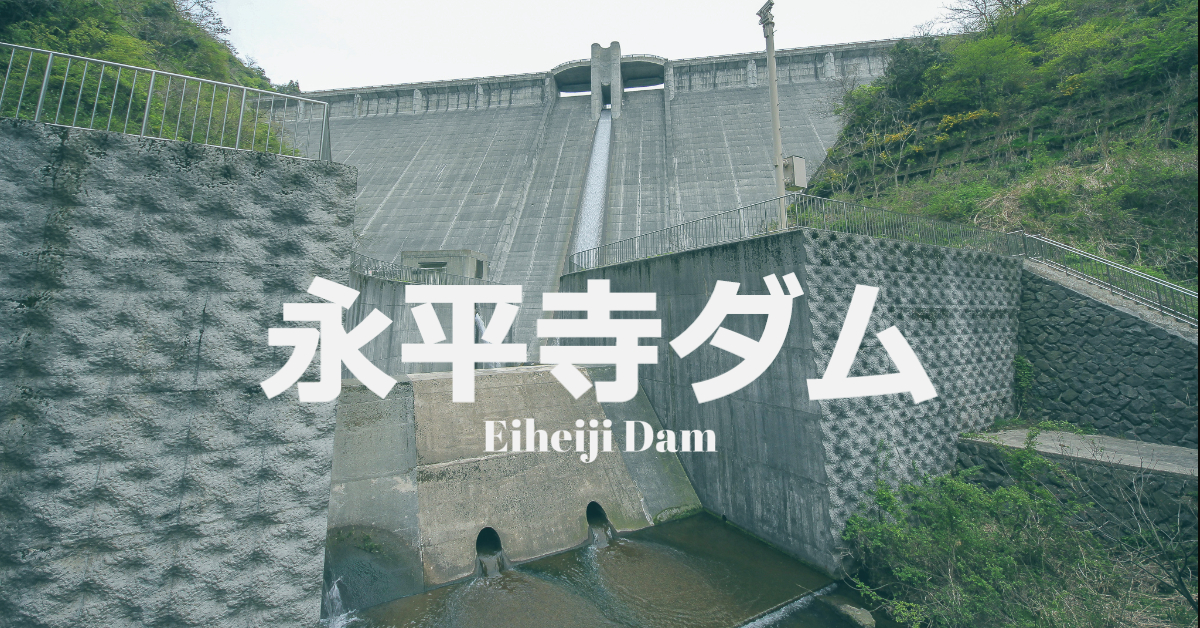
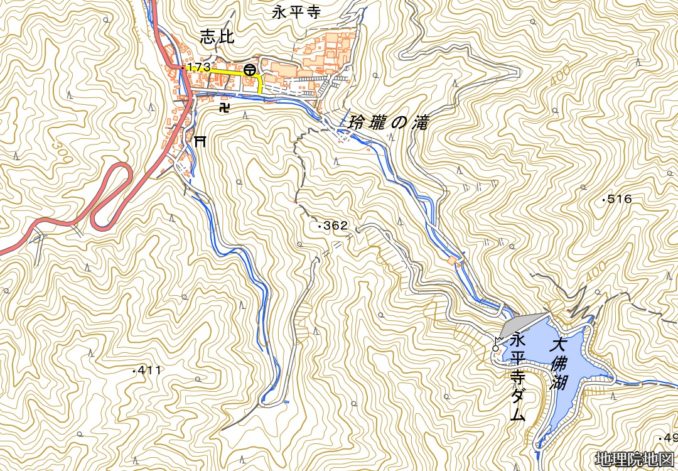

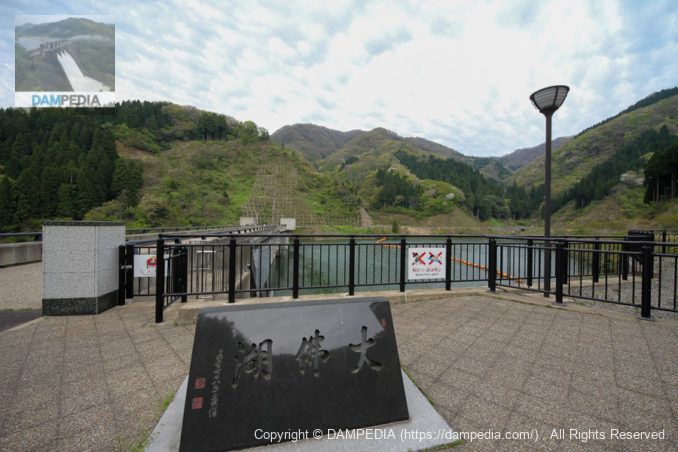
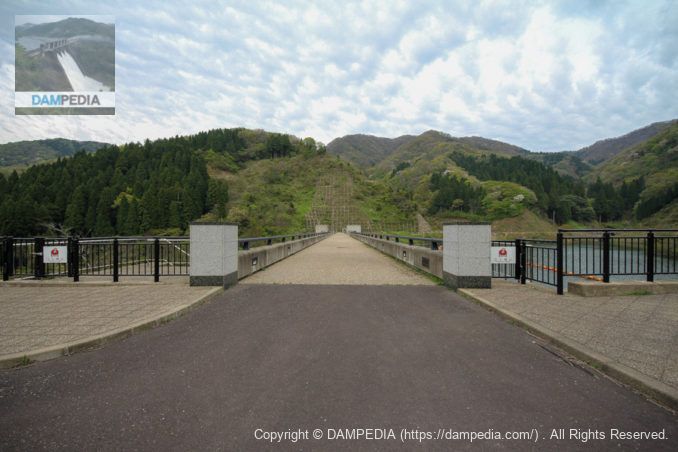

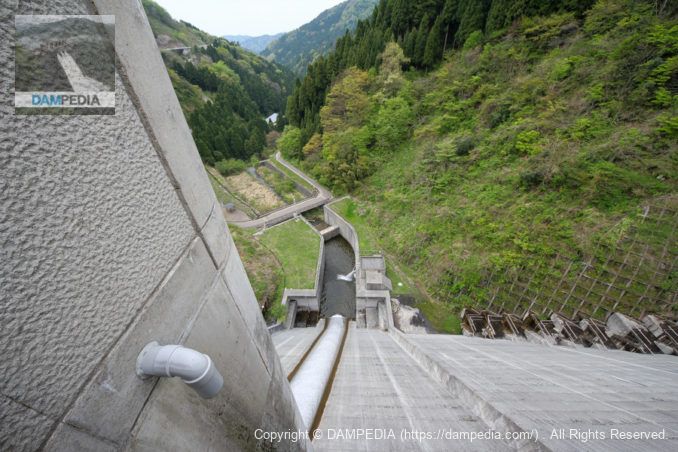
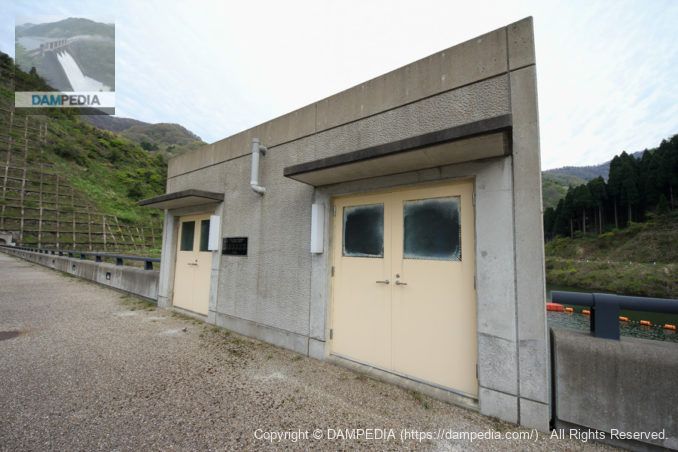
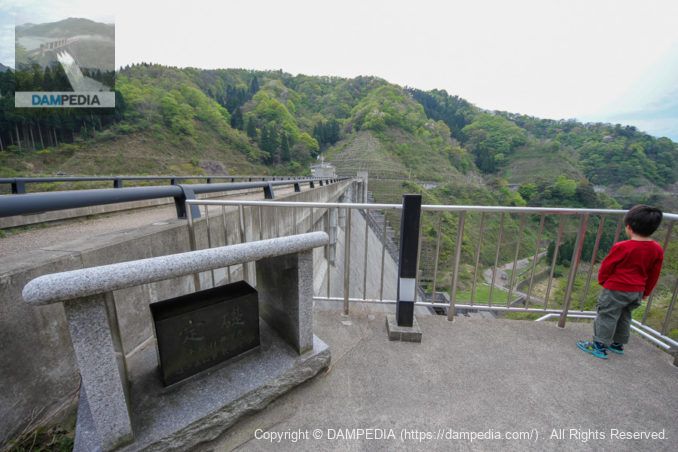
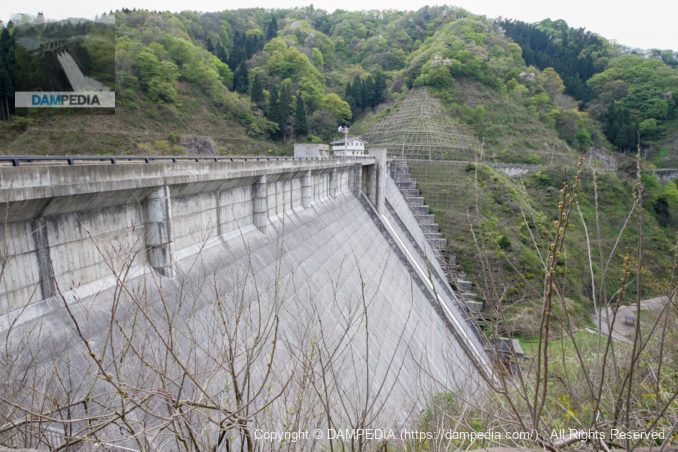
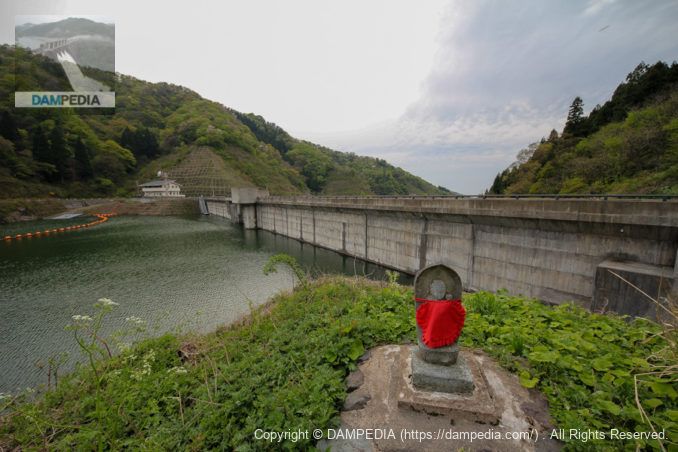
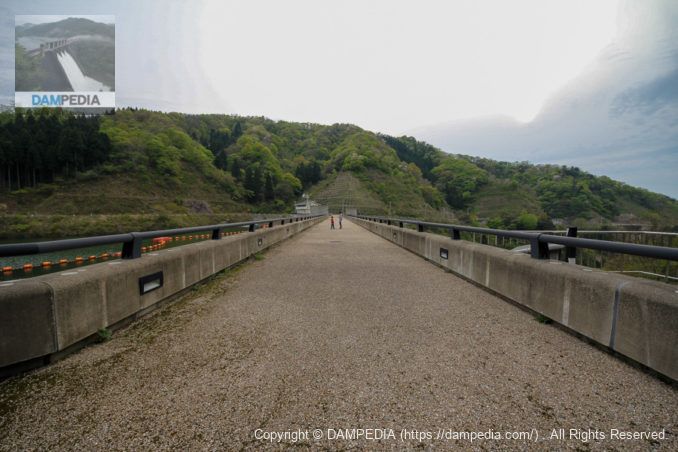


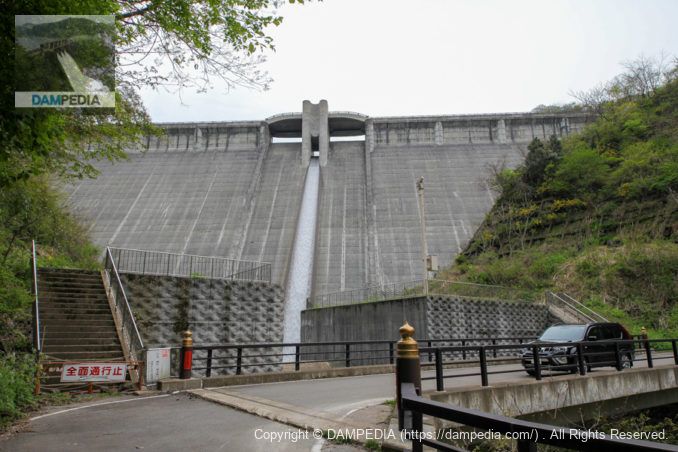

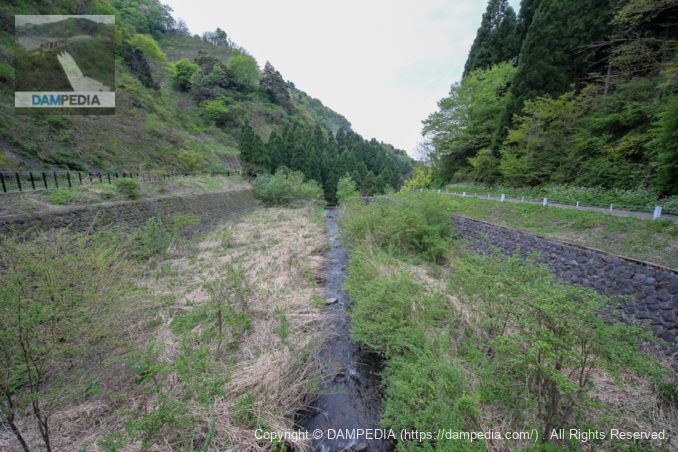
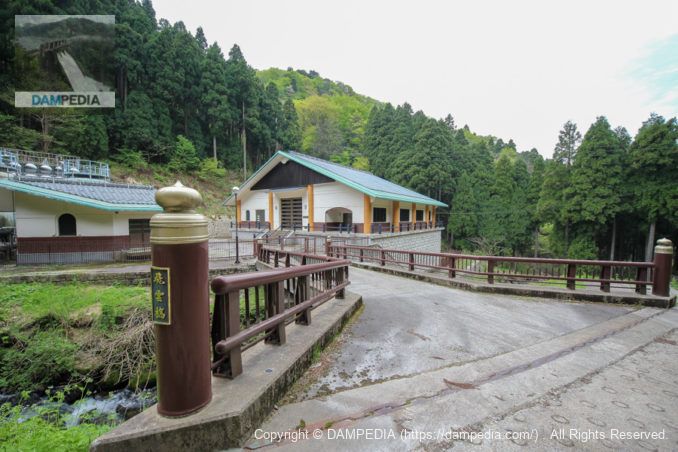
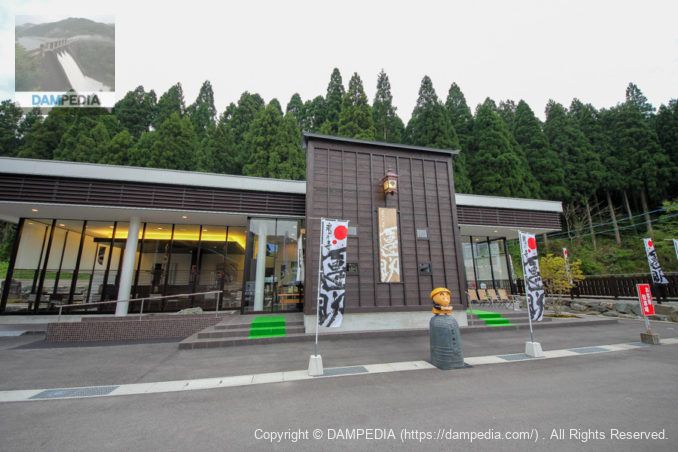



Comment